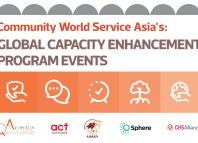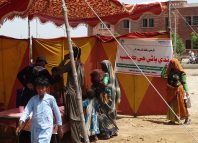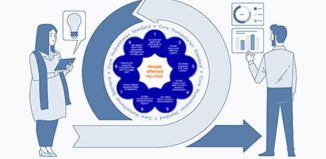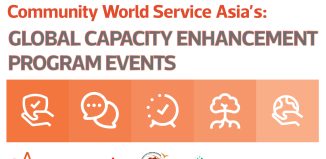HR’s role in Remote Management amid the COVID-19 crisis
The rapid spread of COVID-19 is having an impact on organizations and businesses around the world and, notably, on your relationship with your staff. The impetus is now on organizations and their leaders to begin to both anticipate and mitigate the effects of this crisis. The role of the Human Resource (HR) department is crucial here. The decisions taken by HR will impact the livelihood of the employees, and the entire workforce in a nutshell.
Shifting to a work-from-home culture, especially during a time of crisis or uncertainty, brings its own unique challenges. Managers and leaders overseeing teams working remotely for the first time need to put in place common-sense measures to maximize the effectiveness of their teams.
Commitment 8 of the Core Humanitarian Standard (CHS) on staff competency states that communities and people affected by crisis must receive the assistance they require from competent and well-managed staff and volunteers. How is this possible when most organizations have adopted remote working and management of their staff?
Webinar on The Role of Human Resources (HR) in Remote Management during Covid-19 Response
This interactive webinar organized by Community World Service Asia and its Q&A partners, on April 28th, discussed the challenges encountered in remote management and promoted the role of HR in facilitating an effective remote management process among the regional humanitarian and development community in Asia.
Human Resource professionals and senior management members of organizations representing twelve countries from around the world participated and contributed to the discussions in this two-hour webinar.
Access was highlighted as key to remote management during the session.
stated Uma Narayanan, webinar facilitator.Remote management has a lot to do with access. Advanced technology has made it possible to stay connected at times like these when we are facing non-reachable access. But we have to also consider those countries and areas where there is limited or no technology to maintain connectivity. This is where the different categories of remote management play a prominent role where management delegates, control and support remotely,
Putting in place clear guidelines on the various categories of remote management for staff and employees is critical.
shared Fayyaz Ahmed Fayyaz, from Agha Khan Development Network in Pakistan.Before COVID-19, we used remote management guidelines for certain restricted areas or locations which we could not access frequently. However, the importance of remote management has increased immensely in this crisis. As a Monitoring & Evaluation professional, we should aim at developing simple tools, having clear guidelines that cater to all parameters of the project. For remote management, we have to utilize the digital platform for increased access,
In a group exercise where participants were divided into virtual breakout rooms during the webinar, participants discussed and highlighted the key challenges of remote management. Participants raised that many organizations lack remote management policies or performance management systems that effectively evaluate remote working. The limited capacity of some staff on digital and advanced technology and software used during remote working for communication, coordination, planning and monitoring was also recognized as a challenge. Unstable internet connections at homes, lack of psychosocial support, ensuring staff commitment and motivation and implementing digital HR processes such as virtual recruitment were identified as common challenges. Most INGOs are typically well-resourced in terms of IT and digital systems, however this often is not the case with NGOs and CBOs.
Best Practices & Reflections
Participants shared various measures taken by their organizations to increase effectiveness of remote management. Organizations are ensuring staff awareness for response to COVID-19 and how to protect themselves and others. Clear guidelines and principles with regards to work from home have been defined in workplaces. Emphasis have been put on staff well-being and consequently, psychological first aid for staff and volunteers is made available when the need arises. Online mentoring for leadership level and dissemination of health and safety policies are also among the best practices.
Yeni, Care InternationalWe were well prepared as we are used to working remotely. We have different management teams and a contingency plan which mentions the guidelines for working at home. The plan identifies different scenarios and mentions the risks, according to which measures are taken to provide maximum support to staff for convenient work from home. In addition, our organization has developed policies regarding work from home to ensure staff’s knowledge on the terms and conditions of working from home. Likewise, we utilize social networks including WhatsApp to reach staff and community.
Prajana, NepalWe are all going through similar situations and circumstances. We have always had a work from home policy. But this time around, this is not our usual work from home kind. This situation has specifically influenced our deliverables of the project that need to be implemented and we are answerable to our donors. As an HR professional we are constantly keeping in touch with the staff who are scattered around Nepal and providing them the flexibility to work at their own space. We hold weekly meetings just to know how the staff is coping and offer counseling when needed.
Fayyaz Ahmed Fayyaz, AKND, PakistanMy key takeaway from today’s session was the different techniques to adopt for remote management such as use of technology, and various modes of increased communication with staff and community via telephones, mobile phones and online groups. In addition, to conduct productive and interactive meetings, organizations should adopt various online tools including GoToMeeting, Zoom, Business Skype and many others easily accessible on the internet. We can observe the features of the software and see which best suits our nature of work. The group activity was interesting as each group was divided in separate virtual rooms to discuss the challenges of remote management. Learning different challenges provided a broader view of looking at how remote management can be well-managed to bring out positive outcomes.







